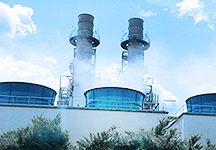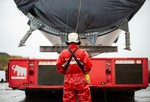News Release from windfair.net
Wind Industry Profile of
Surprising changes from Poland: Offshore wind power instead of nuclear energy?
Poland is a coal country. Even 25 years after the collapse of the Soviet Union and the opening of the country towards the West this has not changed much. The country still continues to use mostly black coal and lignite to generate its electricity: In 2012 still more than 88 percent of the Polish energy mix was generated by coal. Although in recent years some movement has reached the energy market, there are plans to build a nuclear power plant – despite vociferous protests from Berlin and Brussels – rather than switching to renewable energy. And more than 50,000 signatures of citizens from the affected border regions in Germany against the building of this plant didn't change that at all. In short: Climate protection wasn't really high on the Polish agenda.
 So it came as a surprise when Poland late last year in Paris agreed to the global climate protection plan and seemed to have buried plans to build the nuclear power plant after the last election. Originally, its construction was to start in 2020, but now 2030 seems to be an issue. Physicist Lukasz Turski recently told German media Deutschlandradio Kultur: "We absolutely should build a nuclear power plant, but they won’t do it. Our governments, one after another, are simply too indifferent to take matters seriously."
So it came as a surprise when Poland late last year in Paris agreed to the global climate protection plan and seemed to have buried plans to build the nuclear power plant after the last election. Originally, its construction was to start in 2020, but now 2030 seems to be an issue. Physicist Lukasz Turski recently told German media Deutschlandradio Kultur: "We absolutely should build a nuclear power plant, but they won’t do it. Our governments, one after another, are simply too indifferent to take matters seriously."
Now, however, new sounds are to be heard: Poland wants to build an offshore wind farm in the Baltic Sea. The largest private utility in the country, POLENERGIA, announced that they are the first company to obtain the required environmental assessment papers. So there’s nothing standing in the way of the construction anymore, according to a POLENERGIA press release.
And the company has ambitious plans: The wind farm Baltic Skrodkowy III will have a capacity of 600 megawatts in the first construction phase. Later there will be another 600 MW to be added. The 120 turbines will each have a capacity of up to 5MW and are to be 275m high. The technical design shall be finished within the next two years, construction is to take place no later than 2019. In 2022 the wind farm is supposed to generate electricity.
If everything goes according to plan, Poland will be building the largest ever wind farm in the Baltic Sea with almost exclusively Polish subcontractors, as stated in POLENERGIA's press release. Foundations, towers, cables, converter station, turbines, the necessary installation work and the transport vessels are all stated to be of Polish origin, so that more than 60 percent of the estimated costs of 2.34 billion Euro will be invested in the country itself.
"One pillar of the company's development are the greatly promising wind farm projects in the Baltic Sea, which are characterized by high stability and fit into Poland's energy market. The issue of the first environmental decision for offshore wind farms in Poland is a critical milestone in the development of these projects. […] We expect that this year both of our projects in the Baltic Sea will be issued environmental decisions," says Jacek Glowacki, head of POLENERGIA.

This optimism will, however, be needed, because it may be doubted if it is possible to establish a whole industry branch whith the required know-how at this speed. A view across the pond to the US – also a late starter in offshore wind industry – shows how difficult it can be to obtain local businesses without exploding costs. Poland would be well advised to rely on the existing know-how abroad. Eventually, they are not the first nation to build an offshore wind farm in the Baltic Sea...
- Author:
- Katrin Radtke
- Email:
- kr@windfair.net
- Keywords:
- Poland, offshore, wind farm, utility, Baltic Sea

























